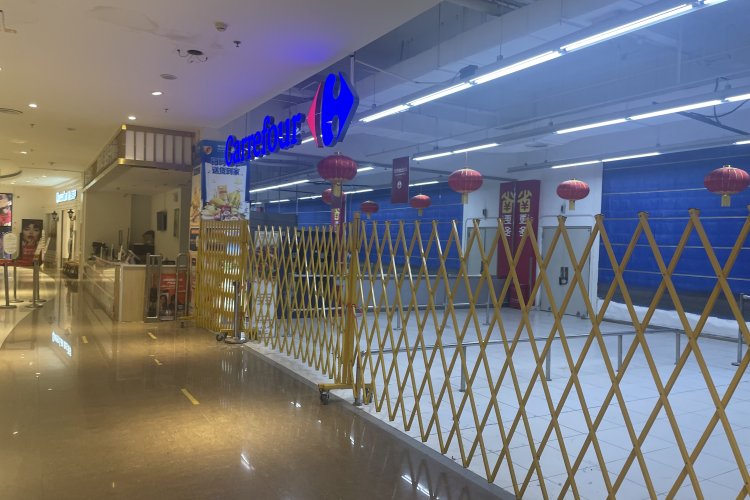Visiting One of Beijing's Two Remaining Carrefours
In February, we highlighted Carrefour's struggling business landscape as the supermarket chain became marred by serious stock shortages and shopping card complications. Currently, only two Carrefour branches -- Shuangjing and Siyuanqiao -- remain operational in Beijing. During a recent visit to the Shuangjing branch, we observed an air of concern among shoppers. A common worry was the inability to utilize the remaining value on their shopping cards.

As we entered the store, one vendor approached us, exclaiming "收卡了, 收卡了." Upon further interaction, it became apparent that she was attempting to purchase shopping cards from customers at approximately 20 percent of the remaining balance. For example, a customer with an existing balance of RMB 1,000 on their shopping card could sell it to these vendors, receiving around RMB 200 in return.
One staff member told the Beijinger customers are now limited to using their shopping cards for only 20 percent of their total purchase amount. The remaining 80 percent must be paid in cash. Additionally, Carrefour has implemented a monthly limit on shopping card usage, capping it to a maximum spend of RMB 1,000.

We chatted with a local resident who was wrestling with a dilemma regarding the unused balance on his Carrefour shopping card. He was caught in a predicament of either not being able to exhaust the remaining balance on his card or selling it to vendors at a depreciated value, neither of which seemed to offer full value for his money.
Shortages were also apparent at the Shuangjing branch. Although supplies of products like beer and detergent remained abundant, other items like napkins and snacks were not fully stocked. Particularly striking was the wine section, where the shelves were completely barren.
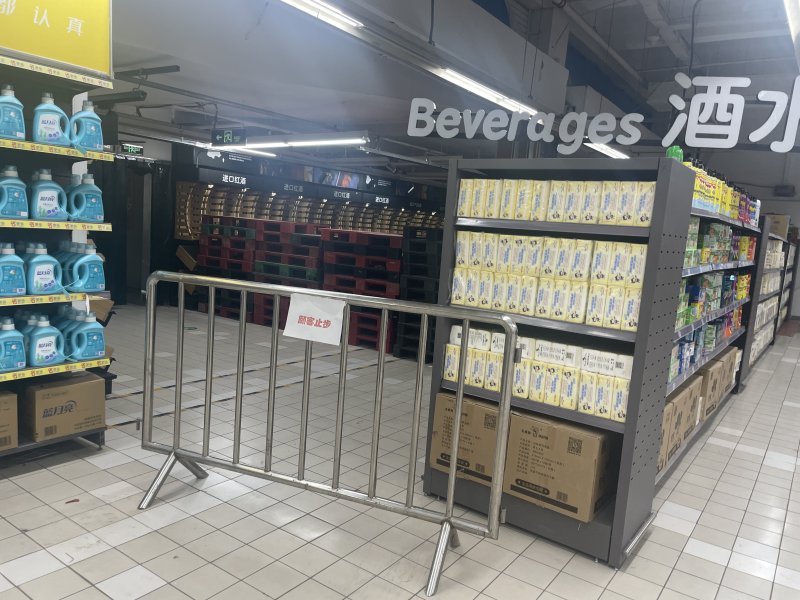
Similarly, in the snack aisles, the areas designated for beef jerky and other dried snacks were only half-filled.
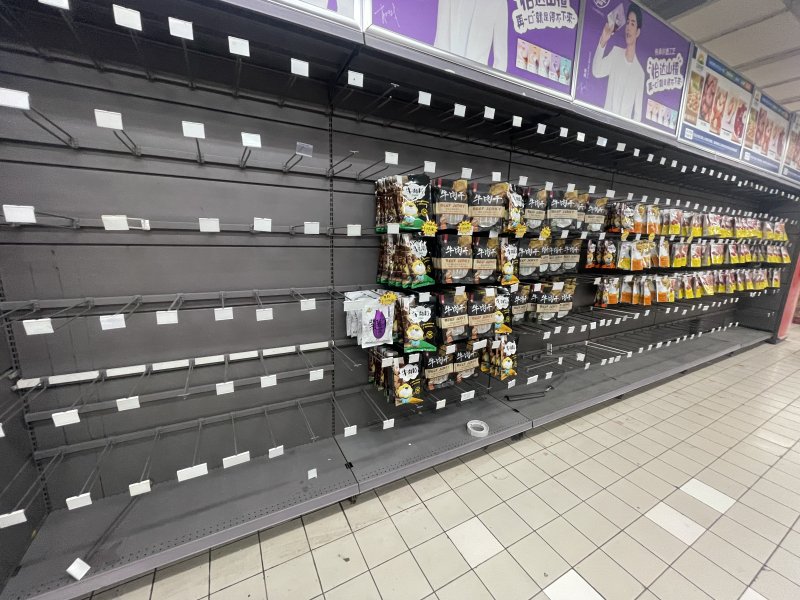
The second-floor section that usually houses fresh meat, vegetables, and frozen fruit was noticeably empty. The entryway to this area was obstructed with stacks of green cardboard boxes, marked with the words 'Fruit & Vegetable’. This barricade prevented customers from accessing the barren section. We asked a staff member about the unusual setup and they informed us that due to a lack of supply, Carrefour had decided to seal off the meat and vegetable sections with these green boxes.
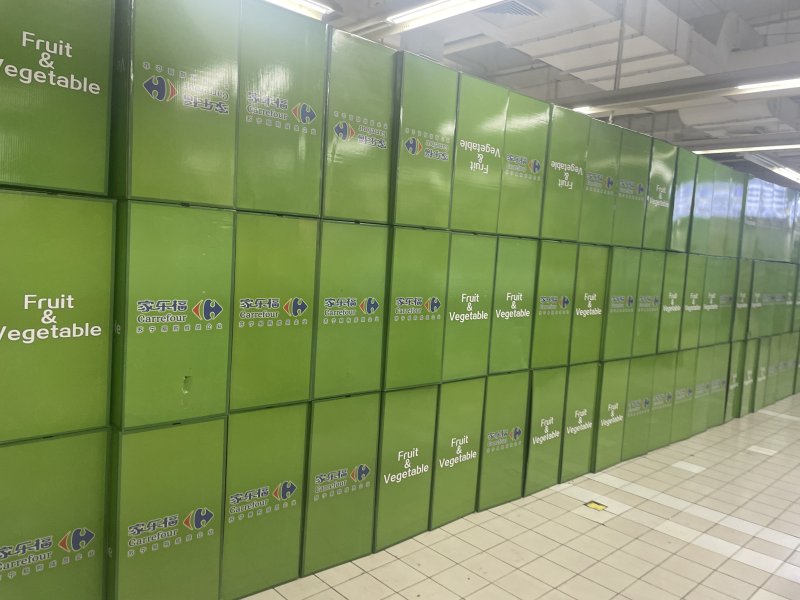
The third floor, once partially filled with Carrefour's offerings, has undergone a complete transformation. We observed that this entire level is now exclusively dedicated to Suning's electronic products.
Despite Carrefour's announcement in early February about a strategic shift in its Chinese market operations, the business seems to be struggling. Just this April, Carrefour had a total of 15 stores in Beijing, which has dwindled down to two in a mere span of two months.
Ironically enough, the Shuangjing branch has the most abundant inventory, despite the empty shelves, because it became the depository for goods from the other closed branches, according to a staff member. Hence, if the Shuangjing branch is displaying empty shelves, it suggests that the state of the other surviving store is likely no better.
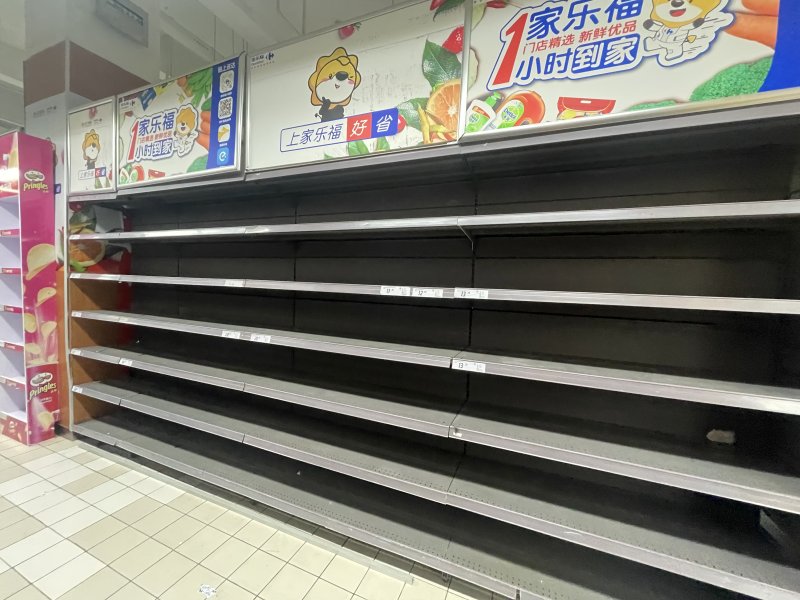
Since making its debut in the Chinese market in 1995, Carrefour has navigated a journey of 28 years. In 2019, Suning, a prominent home appliances retailer, shelled out RMB 4.8 billion to secure approximately 80 percent of Carrefour China's equity shares, marking a significant turn in the corporate landscape. All things considered, though, the once-thriving franchise now appears to grapple with a myriad of challenges, casting a shadow over its future prospects in its Chinese market.
READ: What’s Up With Sanlitun’s “Slow Traffic” System?
Images: Irene Li



